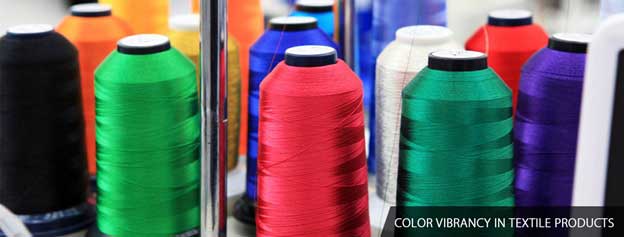Reviewed by Anurag Mishra (Sr. Technical Consultant)

The way a light is perceived by human is called the colour and this is one of the most important factors in the textile industry. The colour that catches the attention of buyer, its retention capacity, transference, fastness, etc. are some common parameters that are assessed to determine the quality of the fabric. The texture of yarn and fabric decides the appearance, the lighting conditions of the surrounding can create the discrepancy in the appearance. For instance, colour red appears differently in different lights. This is why different tests are performed for colour quantification.
In mass production, it is very important to measure the colour as a raw material is available in batches. Manufacturer is dyeing the fabric, using multiple lots, operators are varying… all such factors can create discrepancy in the end product. Therefore, textile colour measurement has become an important part of the textile industry. Now, when we say colour measurement… it may sound impractical to many. But those who belong to this industry know the importance of quantification. When the quality of the garment is assessed, the sample is tested in original form before subjecting to any treatment. After exposing it to various conditions like washing, heat, perspiration, sea water immersion, friction, etc.; the sample is analysed again to see the post-treatment effects.
Color Fastness
The tendency of the garment to retain its colour despite exposing it to harsh conditions can be defined as colour fastness. This property of textiles, printed or dyed fabric, subject to different conditions during processing under the action of the extent of fading is an important quality parameter of the fabric.
Major factors
Fiber – Certain fabrics like polyester, viscose, cellulose fiber and vat dye have good resistance against external factors and thus have good colour fastness. Some fabrics are produced after mixing different yarns together with synthetic fiber, they have good colour retention capacity with substantive dye.
Finishing – Sometimes, to improve the usability of the fabric, the natural texture of the fabric is altered by changing the finishing used. In this case, the colour retention of the fabric increased. In practical usage, the finishing is altered deliberately to improve the color fastness of the fabric.
Colour – The fastness depends a lot on the tone of the colour. E.g. Jet black has less colour fastness property whereas colours like lime, soft pink, etc. have very strong fastness.
Dye – The dye with bigger molecules are easy to fix on the fiber. Also, there are many insoluble dyes available to increase the colour fastness when the fabric is washed. In what way, the dye is fixed on the fabric impacts the colour fastness property.
How to measure the colour?
Sounds tricky but textile colour measurement in not that difficult what it looks like, thanks to advanced colour testing devices. Testronix offers some very good portable devices used for quantifications.
Portable Spectrophotometer
TP 800 and TP 810 are two models of portable spectrophotometer. Capable of comparing master colour with sample colour, this device calculates the difference between L, a, b values. Any difference in the master and sample is displayed in the form of values. Thus, it identifies very minute differences. In the sophisticated colour analysis, the problem of metamerism can often be seen. It works on the principle of measuring the spectral reflectance across the wavelength spectrum. This is why the observations made by this device are more accurate and precise.
Three models of precision colour devices are available TP 200, TP 110, TP 145. This is the perfect device for complex colour analysis, where aperture matters a lot. This is considered as the perfect device for defect detection. Due to good aperture area, the observations made are highly reliable and accurate. With high repeatability rate, the observations are very helpful for large production houses.
Though this is not a portable device but a bench top model. Colour matching cabinet has an important role to play in textile measurement. This device is equipped with 5 different light sources. The test materials are tested in different 5 lighting conditions; Artificial Day light, UV light, Ultra loom, Cool white fluorescent light, the point of sale. While testing the fabric in colour matching cabinet, it is always advised that visual inspection should be done in dark room to avoid any interference of external light.
According to the yarn, the texture of fabric appears differently. The texture impacts the colour appearance making it matte` or glossy. E.g. the appearance of silk is glossy which makes the blue colour look different than on cotton fabric, that has matte` appearance. This device can check the glossy reflection of the surface. Say, you have three samples from different vendors to incorporate in already running a production line. To avoid any discrepancy in the end product, the quantification of shining surface can be done to match the sample accurately.